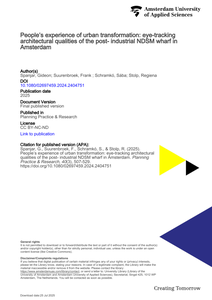The user’s experience with a recommender system is significantly shaped by the dynamics of user-algorithm interactions. These interactions are often evaluated using interaction qualities, such as controllability, trust, and autonomy, to gauge their impact. As part of our effort to systematically categorize these evaluations, we explored the suitability of the interaction qualities framework as proposed by Lenz, Dieffenbach and Hassenzahl. During this examination, we uncovered four challenges within the framework itself, and an additional external challenge. In studies examining the interaction between user control options and interaction qualities, interdependencies between concepts, inconsistent terminology, and the entity perspective (is it a user’s trust or a system’s trustworthiness) often hinder a systematic inventory of the findings. Additionally, our discussion underscored the crucial role of the decision context in evaluating the relation of algorithmic affordances and interaction qualities. We propose dimensions of decision contexts (such as ‘reversibility of the decision’, or ‘time pressure’). They could aid in establishing a systematic three-way relationship between context attributes, attributes of user control mechanisms, and experiential goals, and as such they warrant further research. In sum, while the interaction qualities framework serves as a foundational structure for organizing research on evaluating the impact of algorithmic affordances, challenges related to interdependencies and context-specific influences remain. These challenges necessitate further investigation and subsequent refinement and expansion of the framework.
LINK
Urban densification continues unabated, even as the possible consequences for users’ eye-level experiences remain unknown. This study addresses these consequences. In a laboratory setting, images of the NDSM wharf were shown to university students primed for one of three user groups: residents, visitors and passers-by. Their visual experiences were recorded using eye-tracking and analyzed in combination with surveys on self-reported appreciation and restorativeness. On-site surveys were also administered among real users. The results reveal distinct eye-movement patterns that point to the influence of environmental roles and tasks and how architectural qualities steer people’s visual experience, valence and restoration.
DOCUMENT

Abstract Background Although family photos are often used in the psychosocial care for people with dementia, little is known about the use and efectiveness of generic photos. This systematic literature review explored psychosocial interventions using generic photos for people with dementia, and the efects they have on their social interaction and/or mood and/or quality of life. In addition, it was investigated whether these interventions made use of technol‑ ogy in its implementation. Methods A systematic search on the following databases was performed: PubMed, Embase, APA PsychInfo, Cinahl, Web of Science, Scopus and Cochrane Central. Inclusion and exclusion criteria were based on the PICO model (Popu‑ lation, Intervention, Comparison, Outcome), and quality assessment was undertaken using the Weight of Evidence Framework. Narrative synthesis was undertaken to summarize study characteristics- settings and designs, type of psy‑ chosocial interventions identifed, type of photos and technology used, outcome measures, and results. Results A total of 2,035 results were found, however after title, abstract and full-text screening, a total of 8 studies were included. The most common psychosocial intervention using generic photos was found to be reminiscence therapy, followed by art-viewing activities. In studies that used technology, it was reported that viewing digitalized photos were either similar or better to conventional printed photos. Despite photos being generic, it was found that generic photos could still hold personal signifcance to the person with dementia. Some positive and signifcant efects were found for the outcomes social interaction, mood and quality of life, though no study evaluated all three outcomes. Two studies were rated as having high overall quality, 4 were rated as fair, and 2 studies had a low quality assessment rating. Conclusion Studies found using generic photos were limited, showing varying outcomes and methodological quality. Firm conclusions on the efectiveness of interventions using generic photos are not possible. However, the use of generic photos in psychosocial interventions is a promising area for future research. Researchers should consider studies with better methodological quality and larger samples; and qualitative studies where the intention is to get better insight into successful implementation and impact mechanisms of such psychosocial interventions.
DOCUMENT
